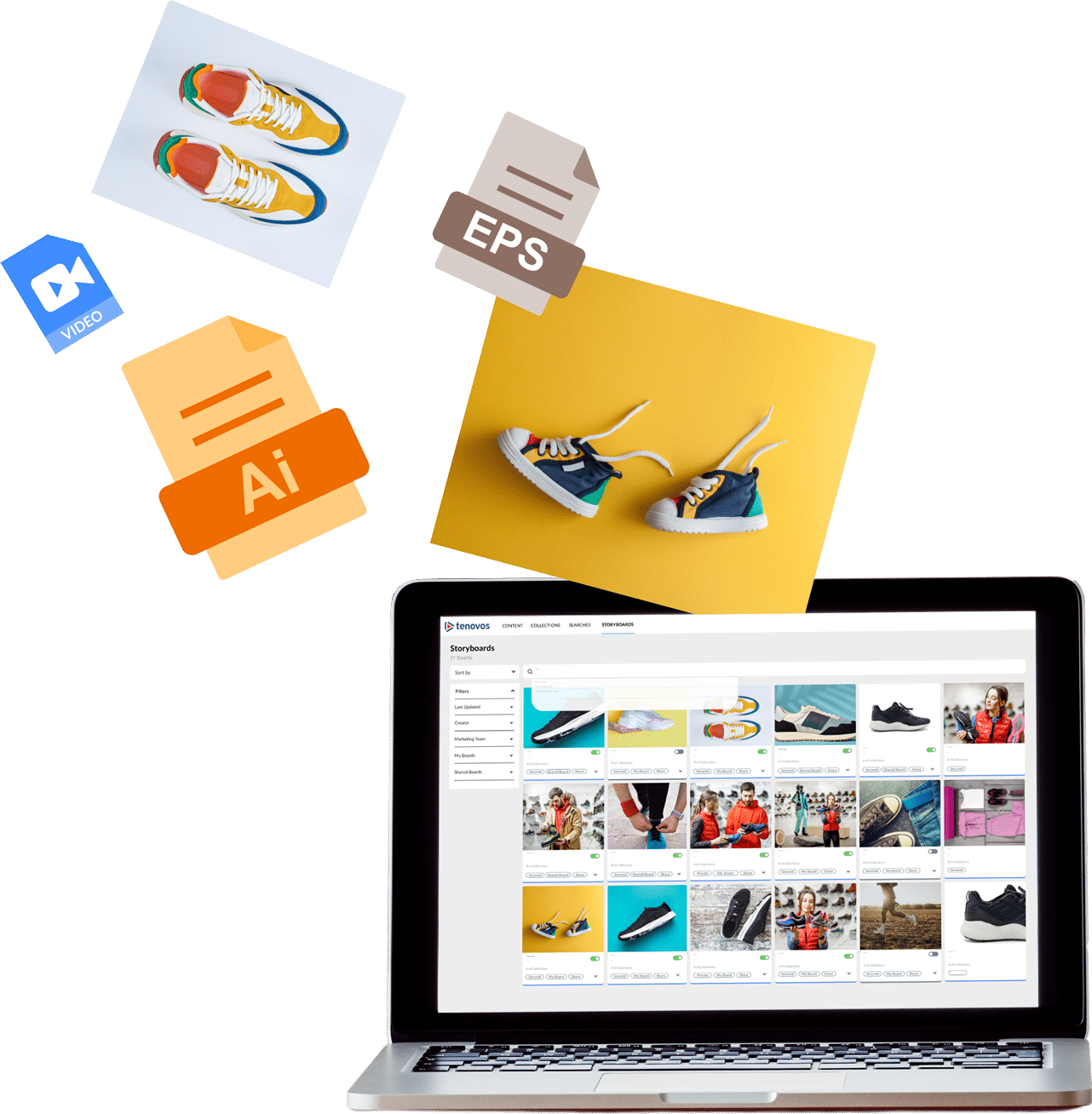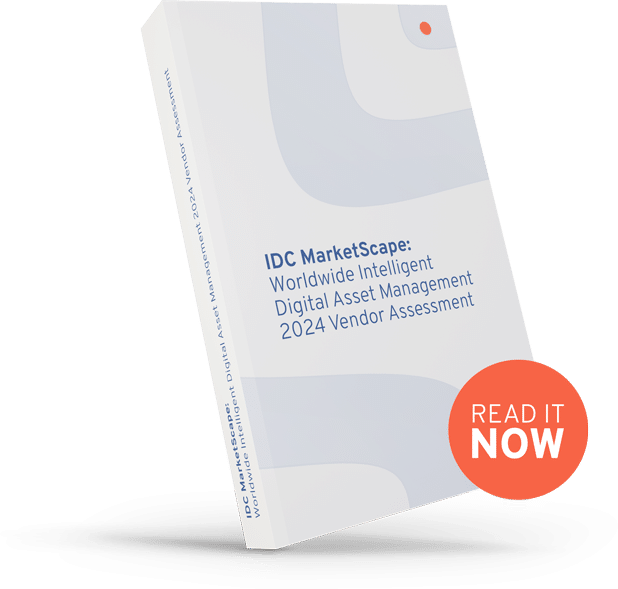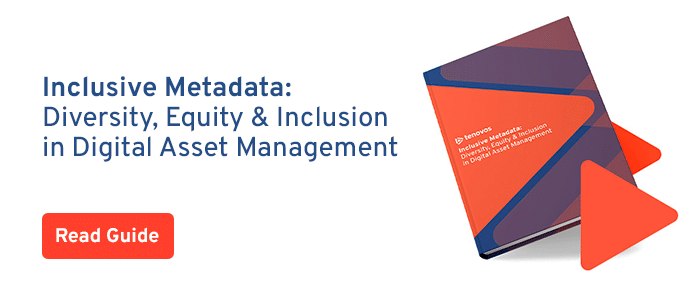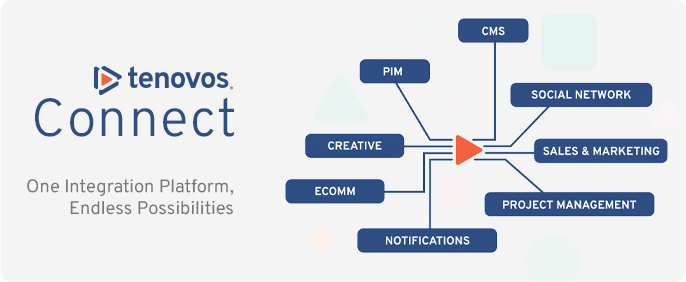
Digital asset management (DAM) technology has come a long way over the last few years, yet many stick to legacy platforms with less functionality, just because it’s too much hassle to make the switch.
The truth is, buyers today are consuming content in new ways, and at a scale we haven’t really seen before. The top brands are those who successfully meet these buyers on their channel of choice, with the content they’re looking for, when they want it… but achieving this is no easy feat.
It takes incredible productivity to output that much content so quickly, the right tools to optimize each asset by the channel it’s going to, the ability to find those assets when you need them, and access to data and insights to know what content those buyers want in the first place.
In other words, it takes a modern DAM!
Now, let’s skip the part where fear is holding us back from migrating to a new DAM – whether that means leaving an existing DAM or some other storage solution like Google Drive – and instead focus on what steps you can take to make the migration as easy as possible when you decide to move forward.
Preparing Your Migration
Take inventory
Yep, this is the obvious first place to start. You’ve chosen your new DAM and it’s time to plan for the migration, so you first need to know exactly what assets are making the move.
Before you create a giant spreadsheet with all your content listed on it, begin by reviewing any and all existing content/asset-related policies. For example, you may have a retention policy that dictates how long you need to store content (popular amongst highly-regulated industries). These types of policies give you important information about what assets need to move, and where they need to go.
Next you’ll want to gather the content. Some things you’ll want to take note of include:
- What type of content is it? – produced in-house, contracted through agencies, licensed, stock, etc.
- Is there a standard file naming convention we need to follow in the new DAM?
- What kind of existing metadata do I have for these assets?
- What asset types and sizes are they?
The note about metadata is important, and here’s a pro-tip: Migration is not only about moving the physical files, it’s also about moving the metadata attached to them. At this stage, you’re gathering that metadata so that on the receiving end of all this content you can organize your files, and users can still find the assets they need.
Failing to map metadata at this stage can lead to mass confusion before the end of the process, which in turn impacts both the quality of the migration and DAM implementation, as well as the timeline to get everything done.
This is also the time to make any changes to your metadata structures before making the move.
Many DAM implementations fail because users don’t want to use the new system. We’ve built a toolkit to help you manage the change, drive user adoption, and ultimately have DAM success.
Prioritizing assets
By now you’ve compiled a giant list of assets you want to migrate over, but here’s a reality check: migrating content doesn’t happen overnight. It can take time depending on the volume of content you want to move over, and how well you’ve organized everything in the first step.
With that in mind, it’s a good idea to prioritize the content you want to move over. Some brands will choose to move any currently live content, or content needed for campaigns, as a starting point. Anything moving over that isn’t currently active in the market, or archives, gets deprioritized. Ultimately it’s up to you and your team how you want to prioritize content migration.
When it gets underway, this prioritization will allow users to be in the DAM right away, with access to the content that you feel is more important to them.
What is content migration lag?
Creative teams never stop making new content. However, because migrating from an old DAM or storage solution to a new platform can take time – often content uploads happen in batches – often the existing solution is still used during the migration. This means newly created content gets put in the older system and has to be moved over as well, creating ‘lag’ in getting these new assets into the DAM.
The overall DAM implementation plan needs to account for this. The new platform should be up and running as fast as possible, otherwise the backlog of new content that has yet to be put into the DAM extends the timeline for migration, which in turn can extend the backlog, creating a continuous cycle that severely threatens implementation timelines and deliverables.
Migration planning
As part of your new DAM implementation, you need to create a migration plan. This step will save you hours of stress and worry over timelines if you just have a good plan in place. Your migration plan should take into account:
- How much content you’re moving over
- When you can start moving assets over (what point of the implementation is the system ready to ingest content)
- The state of metadata and overall content organization
- How many batches of content need to be migrated to the new DAM
- Any predicted content migration lag that should be accounted for in the timeline.
With all of these in mind, your plan should provide clear dates for key milestones in the migration, including when the DAM can start accepting content all the way to the final migration. Sticking to the plan lets you better manage your resources, and the expectations of your stakeholders – who ideally have all agreed to the timelines presented.
Content staging
Most DAMs will have some sort of staging environment where content can be moved to while it awaits its migration.
Whether you’re managing this internally, or you have a migrations team helping you, content will be taken from the staging area and moved into the new DAM. That means at this stage, you’re essentially getting everything queued up to migrate, based on the structure and priorities you’ve set in previous stages.
Once this is done, we can start moving content.
Beginning the Migration
Confirm metadata configurations in the new DAM
As assets start moving into the DAM you want to make sure the metadata configuration was done right. Refer back to your original content audit where you included the metadata, and make sure it’s all carrying over the way you intended it.
You need to validate this now. Waiting can mean users catching the problem post-DAM launch, which is catastrophic for user adoption as it erodes their trust in the system. Maybe as damaging is the amount of work it could take to reapply new metadata structures to all of your content in the DAM if you miss it early.
Now, some DAMs like Tenovos actually make it pretty easy to adjust your metadata structures, but not all platforms have the same functionality. Regardless of which type of DAM you’re migrating to and its functionality, this is a best practice you don’t want to skip.
Confirm your timelines & set up checkpoints
In the preparation phase of the migration you outlined how long you thought the migration was going to take. Now that everything is underway, it’s time to validate that plan.
Are any adjustments needed? Do you have the right resources, and did you give yourself enough, or too much, time to get the job done?
To help you identify where you stand in the migration, refer back to your migration plan and establish specific checkpoints in the process – for example, create a checkpoint after the first batch of content has been uploaded. Are you on schedule so far? Is there anything that needs to be changed leading into the next batch of uploads?
Do this throughout the entire migration process to help you stay on top of everything and ensure it’s moving smoothly. The earlier you can identify issues in the timeline, the sooner you can correct them to mitigate the risk of missed deadlines.
Completing your Migration
You’ve followed all the steps above, and guess what? The migration is over!
Ideally you’ve hit your timelines and it’s time to cutover to the new system completely. This can be a scary process, but it’s important not to linger too long with multiple systems or you risk content lag as we discussed earlier in this blog.
If you’ve done the job well, your users will be able to dive into the new DAM and access all their content with ease, while leveraging the new and improved features you bought the platform for.
Too often, sub-par enterprise tech vendors (DAM included) will actually count on the difficulty of moving between systems as a way of helping retain customers, making it easier for them to overlook customer feedback on the platform.
In contrast, top vendors provide migration support to overcome perceived barriers to swapping vendors. By following the steps outlined above, and choosing a DAM vendor with the expertise and resources to support you through the migration, you can benefit from new, modern and innovative DAM technology in no time at all.
To read more about what you should expect from your modern digital asset management platform, download our vendor guide.



